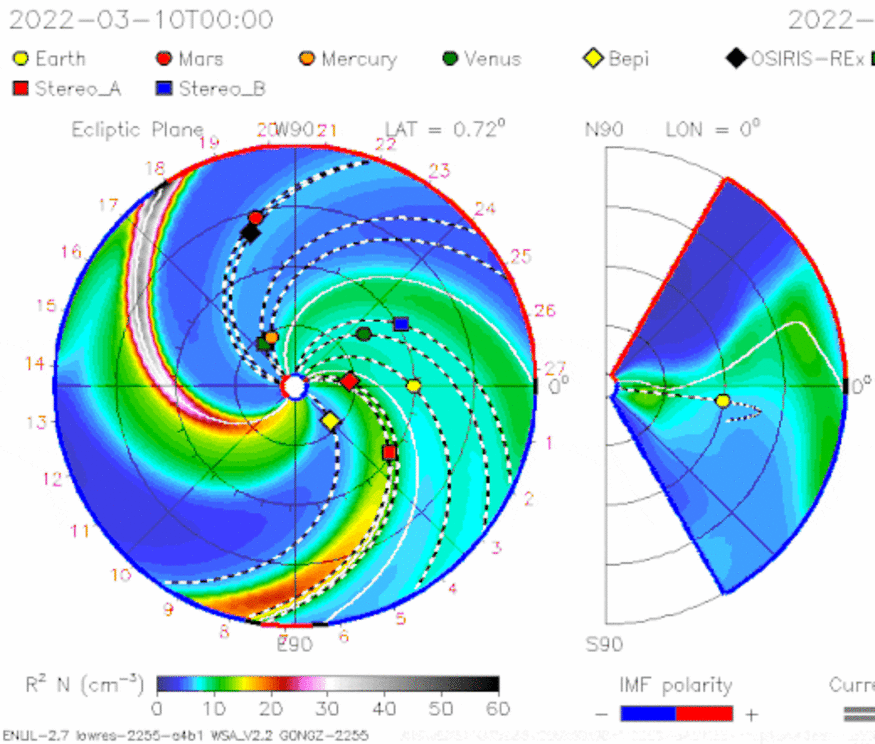CME heading directly for Earth
GEOMAGNETIC STORM WATCH (CATEGORY G2): A full-halo CME is heading directly for Earth. ETA: late on March 13th. Coronagraphs onboard the Solar and Heliospheric Observatory (SOHO) recorded the storm cloud leaving the sun earlier today:
Note: The bright "star" at the lower right of the sun is Jupiter.
This CME is the result of a long duration C2-class solar flare near sunspot AR2962. Normally, C-class flares are not considered to be strong. However, this one lasted nearly 12 hours, allowing it to pump plenty of energy into the CME.
Moderately-strong G2-class geomagnetic storms are possible after the CME arrives. During such storms, naked-eye auroras may appear in northern-tier US states from Maine to Washington. Power grids and satellites will experience little to no effect, however.
A new model of the CME from NASA pinpoints the arrival time around 1800 UT on March 13th. In this animation, the yellow dot is Earth:

Geomagnetic storms, if they materialize, could spill into March 14th, making this a Pi Day geomagnetic storm. That's appropriate. After all, auroras form a circle around Earth's magnetic poles.
Take another look at the NASA model. The CME hits Venus less than a day before it reaches Earth. The CME won't spark a geomagnetic storm on Venus. It can't; the planet has no internally-generated global magnetic field. Instead, the impact will erode a small amount of atmosphere from Venus' unprotected cloudtops.
Geomagnetic storms: One of the perks of living on Earth. High latitude sky watchers should be alert for auroras on March 13-14. Aurora alerts: SMS Text.

